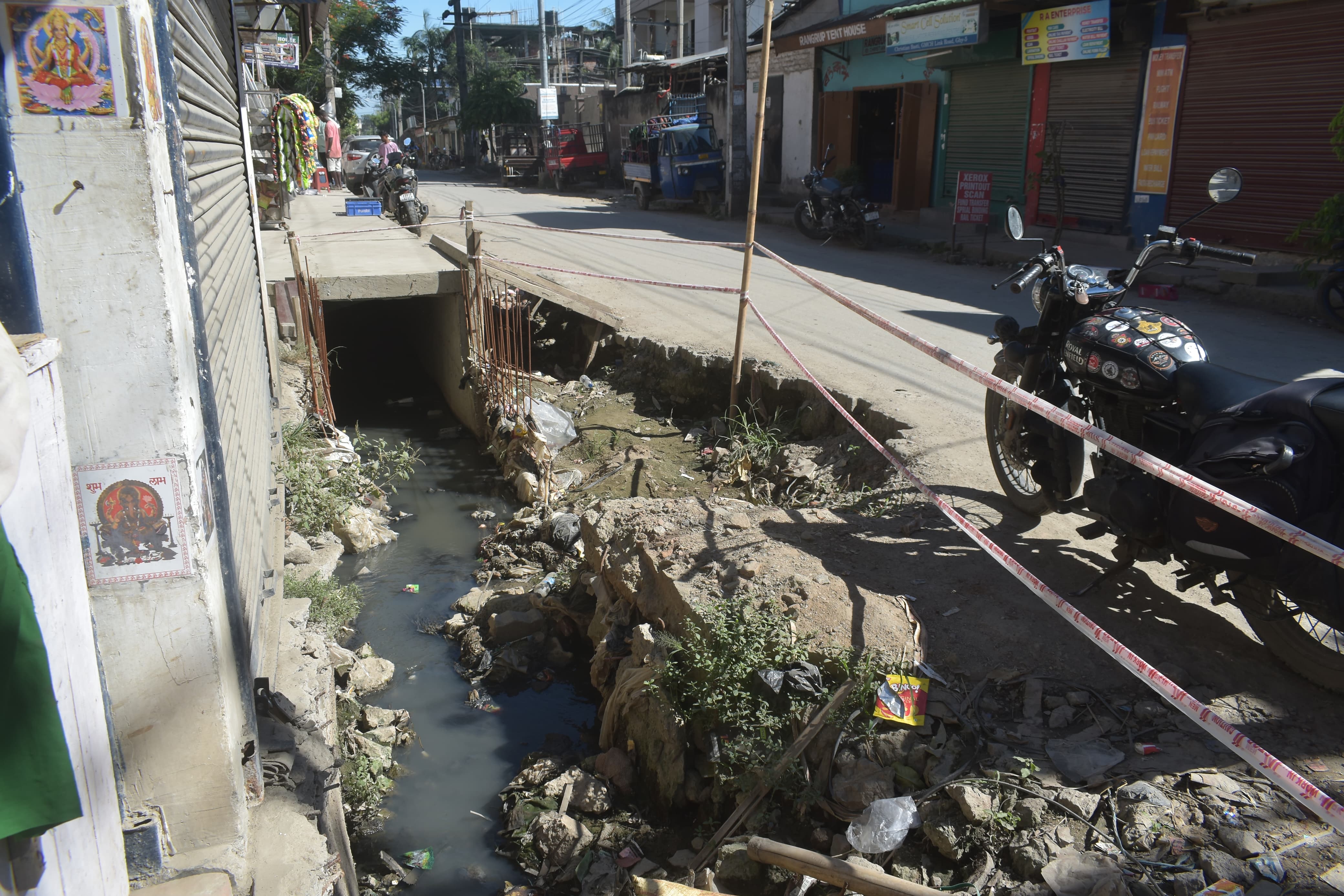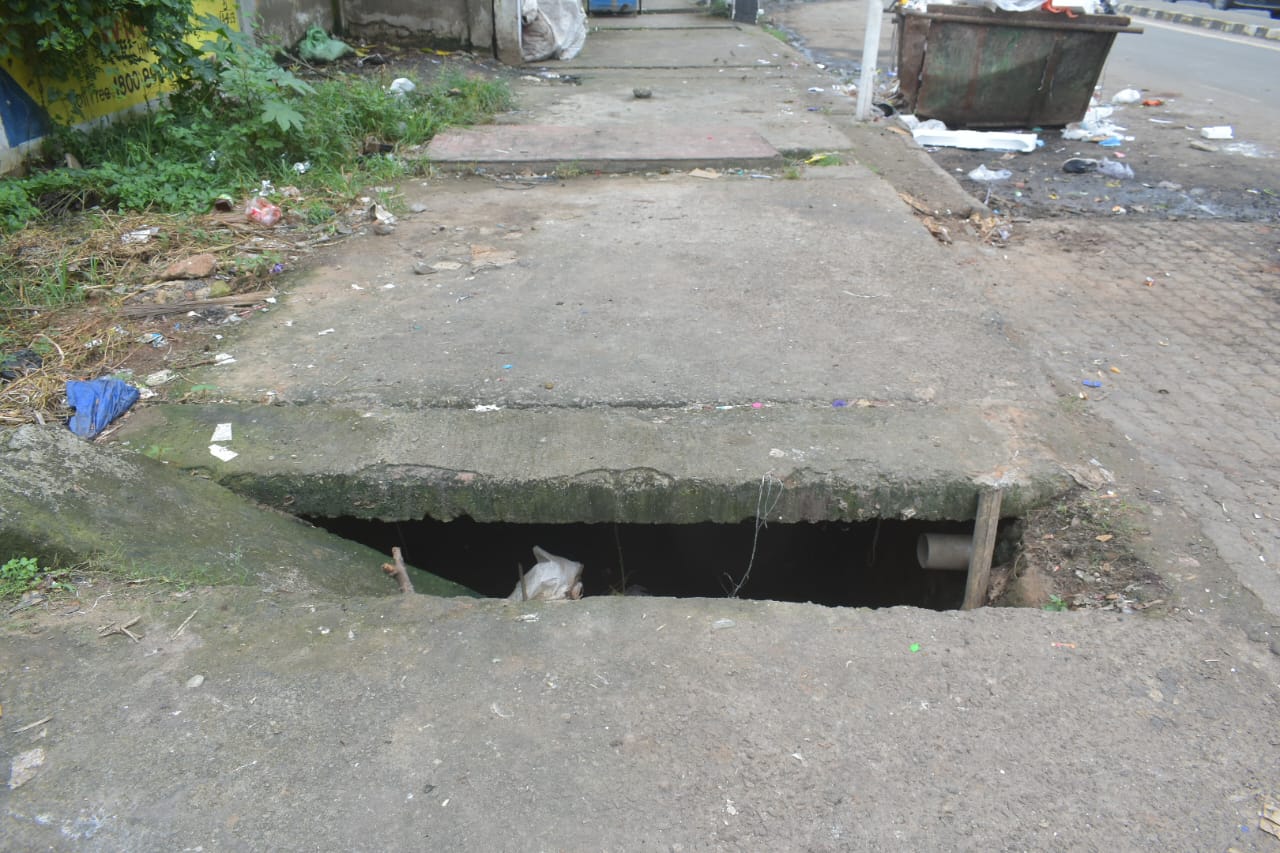Footpaths in Guwahati have their own story to tell. They are unique, almost like a person with different personalities. Someone who is a Jugaru. For those who don’t know, a Jugaru is someone who can make things work with limited resources. And Guwahati's footpaths? They truly live up to this spirit.
ALSO READ: Are Gen Zs Ditching Booze For A Quieter Buzz?
But how are footpaths so multi-purpose? Let me explain. These footpaths, being public property, try to serve everyone. They’re the ultimate people-pleasers.

Want to go hiking, but life’s too busy and work never ends? No problem—just use the footpath, bro! Walking on these is like getting ready for your next big adventure. You’ll be climbing stairs, dodging broken patches, avoiding rods sticking out, or jumping over poop. They literally keep you on your toes. Think of it as training for Takeshi’s Castle or Khatron Ke Khiladi. Step on a loose slab, and you might just fall into a drain—a real-life Takeshi’s Castle challenge! Thrilling, isn’t it?

Walking is too boring for Guwahati’s footpaths. Why not ride on them? Scooters and bikes zoom past, using the footpath as their personal shortcut. Thankfully, cars can’t fit, but if they could, they’d be there too. You of course know the ustads of Guwahati. And when not being used as roads, these footpaths turn into parking lots. Some people even charge parking fees and make a living out of it. Sabka faida hona chahiye, right?
Footpaths also turn into mini-markets. These are spots for stalls selling everything from mobile covers and accessories to tamul-paan, fruits, biryani, and books. You name it, they have it. It’s like they’re carrying the weight of the world—Sari duniya ka bojh hum uthate hai.
Pets love the footpaths too. You’ll see adorable dogs walking with their parents, peeing, and pooping—a full family outing. And if you’re lucky, you might even spot some human poop.
For many street dwellers, footpaths are home. They find their corners, eating, cleaning, and living life right there. It’s their safe space in the middle of the city.
It’s not that people don’t use footpaths in Guwahati. They do. But somehow, walking on the road feels safer. If you fall on the road, someone might notice or even record it. But on the footpath? You might just disappear into a drain.

Authorities are not completely absent in this story. After complaints, tweets, and social media outrage, broken slabs get fixed, and encroachments are cleared. But within days, it’s back to square one. The cycle keeps repeating itself.
But who do we blame for this mess? Is it the residents, who encroach and misuse these public spaces? Or the authorities, who fail to maintain and enforce proper use? Maybe it’s both—each playing their part in this never-ending cycle. Or is it all just a small issue, unworthy of our focus in a city dealing with bigger challenges?
Perhaps, in the end, the blame lies with both, and with none, as we all contribute to the mess in some way.
Guwahati’s footpaths are just a reflection of the city itself—vibrant, chaotic, and always adapting to be the smart city. They’re not just walkways; they’re markets, roads, homes, and even adventure zones. Love them or hate them, they’re here to stay. So, the next time you’re on a footpath in Guwahati, be careful. Who knows? You might just discover its next personality.
(The author uses Guwahati footpaths on a daily basis. All views and opinions expressed in the article are the author's own)



